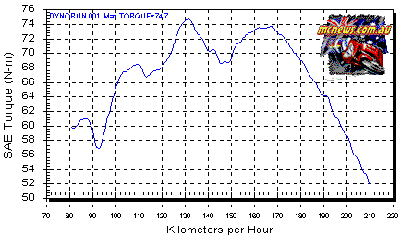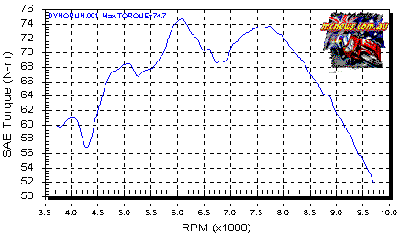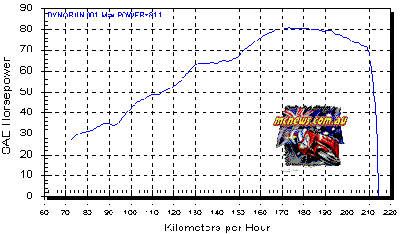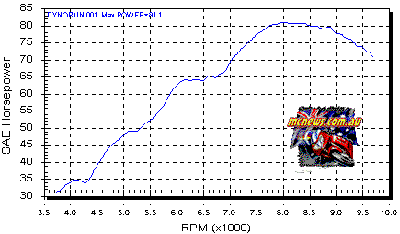On taking my helmet off at a service station, pool of water appearing underneath me, and dripping from 200 very wet kilometres aboard the new KTM Adventure, another customer filling his vehicle remarked, “Not a good day for that mate”.
My instant reply without a thought was, “It’s always a good day for this.” And that really sums up my travels with KTM’s first foray in to the really big-bore adventure market, I had a ball.
KTM have two alternatives in the 950 Adventure line-up. The standard silver model and the orange ‘S’ model. Ground clearance is a generous 281mm for the standard ‘low-seat’ model, or a full 316mm on the taller ‘S’ version.
But ‘low-seat’ is something of a misnomer in this case as it is actually a quite high 880mm, on the tall version it is a quite extreme 915mm. At 179cm tall I was tip-toeing it on the shorter version while at traffic lights, if you are much shorter than me, you may find things a little difficult. No doubt many will opt for the taller version but the standard model isn’t exactly lacking in ground clearance, I was able to negotiate some logs and plenty of very rough terrain without bottoming the machine.
The White Power suspension is without par in this segment of the market. It is firm in the initial part of the stroke, allowing for some reasonably sporting road use. The suspension then stiffens nicely as more travel is used, while still maintaining very good damping control.
I have no doubt that an accomplished dirt rider could get some serious pace going aboard the Adventure on even the roughest of trails, even a bit of ‘airtime’ would not be out of the question. The standard model has 230mm of rear suspension travel while the taller ‘S’ version extends through 265mm.
The PDS White Power shock is adjustable for low and high speed compression damping and rebound damping can also be set to the riders preference. Preload is easily adjustable by a convenient handle that folds out from the left side of the body work, nice touch.
Up front 48mm cartridge forks offer a similar amount of travel as the rear and are also fully adjustable.
Specially developed Pirelli tyres suit the machine well and can handle some reasonable hard charging on the road, while also providing reasonable grip on gravel surfaces. However, if you intend traversing any sandy stretches I would look for some more aggressive dirt rubber, given the 18″ and 21″ rim sizes choices will be wide and variable. But you should also keep in mind the speed rating of more dirt oriented tyres if you intend travelling quickly.
The new Adventure is KTM’s first ever v-twin, and for a first effort they have done mighty well.
The incredibly compact 75° v-twin produces good power and is very smooth running for a large twin cylinder machine. I picked up the bike with only 20km on the digital odometer. I returned it some 940km later when the new donk had really started loosening up. On the dyno it pumped out a healthy 61kw (81hp) at the rear wheel.
If you want more performance then perhaps tick the box for the optional Akrapovic mufflers which should help to unleash a few more ponies, while providing the rider with some aural pleasure to boot. The standard mufflers are very quiet, it seems likely that a pair of aftermarket mufflers will return an appreciable increase in performance.
A pair of 43mm carburettors supply the premium unleaded from a 22 litre dual-tank fuel cell which provides for a touring range of around 350km. I did have some trouble with the tanks not equalizing properly even though the taps joining the tanks were open. Instead I would run the left hand tank dry and then have to stop and open the fuel filler caps while waiting for the tanks to equalise. I put this down to a blocked or kinked breather hose which must have been preventing the tanks breathing, and thus allowing them to equalise. It certainly proves that the caps seal well.
KTM claim their new engine weighs in at only 58kg, contributing not so heavily to the reasonable 198kg dry weight of the Adventure. I did not weigh the machine myself but I consider that figure fairly accurate as the machine is quite easy to throw around considering its somewhat intimidating size when off road. The chro-moly frame weighs in at 11kg and KTM claim an exact 50/50 weight distribution front to rear.
The 1,000km service on the new 942cc motor is a major check-up complete with valve clearances adjustments. A good reason to try and negotiate the first service in to a purchasing deal as the bill is likely to run to over $400.
The torquey power is transferred through a smooth shifting six-speed gearbox and hydraulic clutch. After riding the machine I suspected some sort of back-torque limiting system to reduce engine braking. My suspicion was confirmed when I questioned KTM technical guru Rob Twyerould on the issue. He mentioned that the system is similar to that previously used by Suzuki on the TL1000S.
The gearing on the Adventure is perhaps more suited to mainland Europe’s more generous speed limits. I would be adding a few more teeth to the rear sprocket to make things a little more pleasant at a legal pace. As shipped the KTM will not be happy sitting at 110kph in top gear, fifth gear is actually more suitable for that speed. In fact, the KTM is geared for 250kph in top gear while in reality it will only manage around 200kph, and will actually go faster in 5th gear than in 6th gear.
Around town the machine is quite pleasant with a comfortable riding position and relatively smooth motor making for a relaxing ride.
A well equipped cockpit offers a conventional tachometer flanked by a large LCD screen displaying speed, odometer, tripmeters, temperature, low fuel and various trip master functions. It glows in an attractive orange hue, very KTM indeed.
The vertically arranged headlight illuminates your path well enough for such a design. The screen looks too small to be effective but is obviously quite well designed as I experienced very little buffering on the Adventure, even when riding in some atrocious weather conditions. Due to the fairly slim nature of the machine very little protection is offered for the legs, any rain quickly soaks the riders knees and thighs.
Virtually no vibration is felt through the hands or feet as the Renthal bars seem well insulated while the serrated footpegs are rubber topped for comfort. Unfortunately the same can’t be said for the seat which is a little too firm for my liking, it also seemed to throb with low frequency vibrations. I think many owners will invest in a thick sheepskin or aftermarket seat for the Adventure. But it is by far not the worst I have experienced and you could learn to live with it, or maybe I am just getting a bit soft in my old age…
KTM offer plenty of accessories for serious touring with a set of factory panniers selling for just over $1,900 or a factory tankbag for a more modest $289. Another accessory worth considering is the $795 remote control factory alarm system. The 950 Adventure sells for $21,750 ride away in the low-seat silver version while the tall version in the customary KTM orange is $21,900 ride away.
Links to more images of the new Adventure are at the bottom of this page.
KTM 950 Adventure – Specifications
- Engine Type 2-cylinder, 4-stroke, V 75°
- Bore x Stroke – 100 x 60 mm
- Transmission – 6 gears, dog-clutch engagement
- Displacement – 942 cc
- Compression ratio 11,5:1
- Carburettor – CV 43mm
- Cooling – liquid cooled
- Clutch – Wet multi-disc clutch, operated hydraulically
- Performance – 98hp @ 8000rpm (Claimed) – 81hp @ 8,000rpm (Tested)
- Torque – 95Nm @ 6000 rpm (Claimed) – 74.7Nm @ 6,000rpm (Tested)
- Valvetrain – DOHC, spur-gear driven tooth-type chain
- Starting – Electric
- Rims – 2.15″ x 21″ (F) and 4.0″ x 18″ (R)
- Tyres – 90/90-21″ (F) and 150/70-18″ (R)
- Ground clearance – 281mm or 316mm for the ‘S’
- Rear brake – Single disc 240mm
- Front brakes – Double disc 300mm
- Rear suspension – WP-PDS- fully adjustable
- Front suspension – WP-USD 48 MA fully adjustable
- Dry weight – 198 kg
- Wheelbase – 1570mm
- Frame – Chromium-molybdenum tubular space frame, powder-coated
- Subframe – Aluminium
- Seat height – 880mm or 915mm for the ‘S’
- Steering head angle – 26.6°
- Fuel capacity – 22 litres
These runs were completed on a Dynojet 150 and are the best of a number of runs.
This machine was still a little tight with 500km on the clock and may be expected to make a little more horsepower after the 1,000km first service.
Not that these figures are unrespectable, as that is definitely not the case. These charts are more than a match for a 900SS Ducati for example.
This particular machine had a slight stumble at around 5,000 – 5,500rpm, this showed up on the road and on the torque chart below. This was due to slightly incorrect jetting for Australian conditions.



























